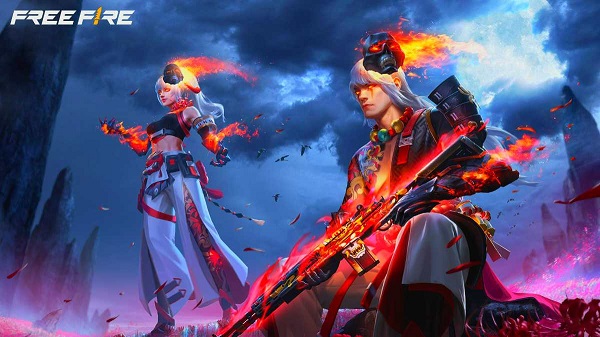Advertisement
Popular Now
Free Fire, the immensely popular battle royale game developed by Garena, boasts a dynamic and competitive gaming environment. At the heart of this competitive nature is weapon balancing—a critical aspect that influences gameplay fairness and player satisfaction. Proper weapon balancing ensures that no single weapon dominates the battlefield, allowing players to engage in fair competition and diverse strategic play. However, achieving and maintaining balance is an ongoing challenge due to the game’s evolving nature and player feedback. This article delves deeply into the complexities of weapon balancing in Free Fire, examining historical issues, current challenges, and potential solutions.
Historical Overview of Weapon Balancing
 Early Weapon Balancing Issues
In the early days of Free Fire, weapon balancing was less refined, leading to several issues:
Early Weapon Balancing Issues
In the early days of Free Fire, weapon balancing was less refined, leading to several issues:
 Overpowered Weapons
Despite numerous updates, some weapons in Free Fire continue to be perceived as overpowered. Key issues include:
Overpowered Weapons
Despite numerous updates, some weapons in Free Fire continue to be perceived as overpowered. Key issues include:
 Competitive Fairness
Weapon imbalances significantly affect competitive fairness:
Competitive Fairness
Weapon imbalances significantly affect competitive fairness:
 Recent Balancing Updates
Garena has made several recent efforts to address weapon balancing issues:
Recent Balancing Updates
Garena has made several recent efforts to address weapon balancing issues:
 Implementing regular and transparent updates is crucial for maintaining balance:
Implementing regular and transparent updates is crucial for maintaining balance:
 Early Weapon Balancing Issues
In the early days of Free Fire, weapon balancing was less refined, leading to several issues:
Early Weapon Balancing Issues
In the early days of Free Fire, weapon balancing was less refined, leading to several issues:
- Dominant Weapons: Certain weapons, such as the M60 and AWM, were significantly more powerful than others, creating an imbalance.
- Player Complaints: Players frequently voiced frustration over the dominance of specific weapons, which impacted the overall gameplay experience.
- Patch 1.5: Adjusted damage and accuracy for various weapons to reduce the effectiveness of overpowered items.
- Patch 2.0: Implemented changes to sniper rifles, balancing their damage output and reload times.
- Patch 3.0: Introduced new weapons and made further adjustments to existing ones, aiming to diversify weapon choices and balance gameplay.
 Overpowered Weapons
Despite numerous updates, some weapons in Free Fire continue to be perceived as overpowered. Key issues include:
Overpowered Weapons
Despite numerous updates, some weapons in Free Fire continue to be perceived as overpowered. Key issues include:
- High Damage Output: Weapons like the M60 and AWM still deal excessive damage, often leading to one-shot kills.
- Range and Accuracy: Certain rifles and sniper rifles maintain superior range and accuracy compared to others, giving players an unfair advantage.
- SMGs and Shotguns: These weapons often struggle to compete with more versatile rifles, leading to decreased usage and effectiveness.
- Limited Range and Damage: Many underpowered weapons have lower damage and range, making them less appealing in various scenarios.
 Competitive Fairness
Weapon imbalances significantly affect competitive fairness:
Competitive Fairness
Weapon imbalances significantly affect competitive fairness:
- Unfair Advantages: Players using overpowered weapons often have a substantial edge over others, skewing match outcomes.
- Reduced Skill Variety: When certain weapons dominate, players are forced to use them, reducing the variety of skills and strategies employed in matches.
- Dominant Strategies: When specific weapons are overpowered, the meta revolves around using those weapons, limiting tactical diversity.
- Gameplay Monotony: A narrow meta can make gameplay repetitive and less engaging, as players focus on the same strategies and tactics.
 Recent Balancing Updates
Garena has made several recent efforts to address weapon balancing issues:
Recent Balancing Updates
Garena has made several recent efforts to address weapon balancing issues:
- Patch 4.0: Made adjustments to the damage and recoil of various weapons, aiming to balance their effectiveness.
- New Weapon Introductions: Added new weapons to provide more options and counterbalance existing imbalances.
- Feedback Integration: Incorporated player feedback into balancing decisions to address concerns and improve the overall experience.
- Partial Solutions: Some changes have improved balance but have also introduced new issues or failed to fully resolve existing ones.
- Community Feedback: Continuous player feedback helps identify problems and guide future updates, but it also reveals the complexity of achieving perfect balance.
 Implementing regular and transparent updates is crucial for maintaining balance:
Implementing regular and transparent updates is crucial for maintaining balance:
- Consistent Adjustments: Regularly adjust weapon stats to address emerging imbalances and maintain a fair gameplay environment.
- Transparency: Clearly communicate the reasons behind balance changes to foster trust and understanding among players.
- Performance Metrics: Analyze weapon usage statistics, damage output, and player feedback to identify imbalances and make informed decisions.
- Machine Learning: Implement advanced analytics and machine learning techniques to predict and address balancing issues proactively.
- Surveys and Feedback: Conduct surveys and gather feedback to identify common concerns and preferences related to weapon balance.
- Beta Testing: Use beta testing to trial new weapons and balancing changes before full implementation.
- Game Analytics: Advances in game analytics can provide deeper insights into weapon performance and player behavior.
- New Gameplay Mechanics: Future updates may introduce new mechanics that require adjustments to existing weapon balance.
- Dynamic Adjustments: Implement a flexible balancing system that can quickly respond to new content and gameplay changes.
- Continuous Evaluation: Regularly evaluate weapon balance and make adjustments based on ongoing data and player feedback.






















